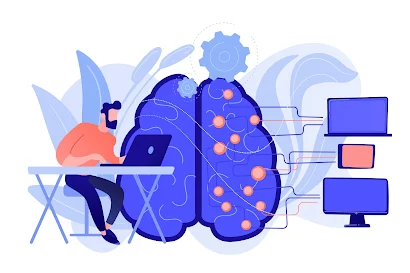Delving into the Mysteries of Machine Learning
In the contemporary data-driven landscape, machine learning (ML) has emerged as a groundbreaking force, sparking transformations across industries and reshaping our interactions with technology. This dynamic field of artificial intelligence (AI) empowers computers to acquire knowledge from data, bypassing the need for explicit programming. It equips them with the ability to predict outcomes, discern intricate patterns, and adapt to evolving information. As ML continues its evolutionary journey, its influence becomes increasingly pervasive, reaching into every facet of our lives. This influence ranges from the personalized recommendations we encounter on our preferred streaming platforms to the sophisticated fraud detection systems safeguarding our financial transactions.
Unleashing Data's Potential
At the core of ML lies the remarkable capacity to extract insights from vast datasets. By scrutinizing patterns and correlations within these datasets, ML algorithms unearth concealed relationships and make informed decisions. This prowess has unlocked a realm of possibilities, enabling businesses to optimize their operations, enhance customer experiences, and gain a competitive edge.
The Diverse Landscape of Machine Learning
The sphere of ML encompasses an array of techniques, each meticulously tailored to specific tasks and applications. In broad strokes, ML algorithms can be classified into three primary categories:
Supervised Learning: In this approach, algorithms are trained on labeled datasets where each data point is linked to a known outcome. These algorithms acquire the ability to map inputs to outputs, thereby enabling predictions for new data points.
Unsupervised Learning: Contrasting supervised learning, unsupervised algorithms operate without the luxury of labeled data. Their challenge lies in unraveling concealed patterns and structures within unlabeled datasets, often deployed for tasks such as data clustering and anomaly detection.
Reinforcement Learning: This approach centers on the training of algorithms to interact with their environments. They receive rewards for desired actions and penalties for undesirable ones. Through a process of trial and error, these algorithms evolve to make optimal decisions that maximize their rewards.
Applications Encompassing Our World
The reach of ML stretches far beyond the technological realm, penetrating various sectors and industries. A handful of illustrations showcase how ML is revolutionizing our world:
Healthcare: ML algorithms analyze medical images, predict patient outcomes, and customize treatment plans.
Finance: ML is harnessed to identify fraudulent transactions, evaluate creditworthiness, and optimize investment strategies.
Retail: ML drives personalized product recommendations, refines customer segmentation, and forecasts demand.
Transportation: ML spearheads the advent of self-driving cars, streamlines traffic flow, and elevates logistics management.
Manufacturing: ML is deployed to prophesize equipment failures, fine-tune production processes, and enhance quality control.
The Future Unfolding
As ML advances, its societal impact is poised to deepen. We anticipate ML taking on an increasingly central role in addressing global challenges, from mitigating climate change to ameliorating disparities in healthcare. Furthermore, the integration of ML with other emergent technologies, such as the Internet of Things (IoT) and robotics, will amplify its transformative capabilities.
Embracing the Machine Learning Revolution
As we navigate the ever-evolving tech landscape, it is imperative to recognize the immense potential inherent in ML. By harnessing the power of data and embracing the capabilities of ML, we can unlock fresh frontiers of innovation, enhance our quality of life, and shape a brighter future for generations to come.






0 Comments